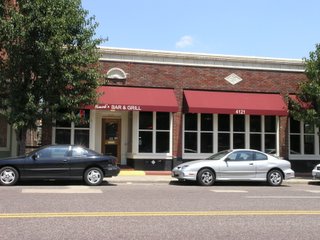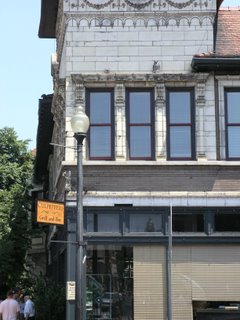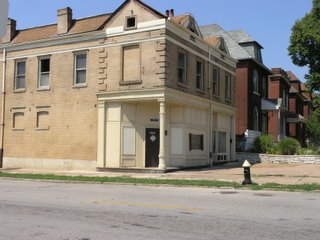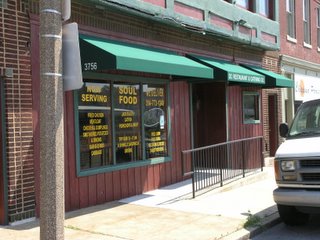Article by David Bianco, author of "Gay Essentials" (Alyson Publications), a collection of his history columns.
"Butch-femme" usually signifies the lesbian bar culture of the
middle part of the 20th century. But the origins of butch-femme
identity may go back at least 100 years before that time, and its
social and cultural legacy continues to the present day.
The exact origins of butch-femme identity are unknown, though there
are scattered 19th-century references to female companions who might
be the precursors of later butches and femmes. In the 1820s, for
example, "Miss Willson and Miss Brundage" were two unmarried women
who lived together on a farm in upstate New York. Sarah Brundage
wore the pants in the family -- literally -- and undertook
traditionally male chores, like plowing and planting. In contrast,
Mary Ann Willson performed the more "womanly" tasks of caring for
their cabin and painting watercolors. Their relationship inspired
the 1972 lesbian novel "Patience and Sarah."
In a New England newspaper 20 years later, writer and critic William
Cullen Bryant made a brief reference to another proto-butch-femme
couple whom he had encountered in northern Vermont. "One of them ...
might be said to represent the male head of the family," Bryant
wrote; the other he described as "a gentle companion, ... a fond
wife."
In the late 19th and early 20th centuries, a number of upper-class
women paired off in romantic relationships, with one partner
perceived as "mannish" in appearance and manner, while the other was
more traditionally "feminine." Poet Amy Lowell, for example, smoked
cigars and wore tailored suits, while her companion, Ada Dwyer
Russell, gave up her career on the stage to type Lowell's
manuscripts. Gertrude Stein and Alice B. Toklas were another
prominent female couple whose relationship incorporated traditional
heterosexual gender roles; the two even referred to each other
as "Hubbie" and "Wifie."
In the 1920s British writer Radclyffe Hall immortalized a butch-
femme couple in her novel "The Well of Loneliness." Hall's Stephen
Gordon was a classic butch woman, based on actual case studies of
female "inverts" from the files of sexologist Havelock Ellis, who
thought of lesbians as men trapped in women's bodies. By contrast,
Stephen's lover Mary was more feminine and therefore not a true
invert. Lesbian historians have suggested that Hall's widely read
novel may have set the stage for the butch-femme culture that began
forming in American cities in the following decade.
Unlike Hall's focus on aristocrats, recent historians have studied
working-class butch-femme couples of the mid-20th century. With the
rise of industrialization and the growth of cities in the years
following both world wars, working-class women were freer to move
away from their families, find jobs, remain unmarried, and form
social networks. An urban lesbian subculture began to emerge and
thrive particularly well in bars -- havens where women could meet
each other for love and friendship.
The subculture of lesbian bars had rules that governed its
membership: a lesbian (or "gay girl," as was often said at the time)
was either butch or femme. Codes for dress and behavior were strict.
One lesbian bar in Massachusetts even had separate washrooms, with
doors marked "butches" and "femmes."
Butches -- or studs, as they were also called -- dressed in male
attire, held doors for their femmes, and lit their cigarettes.
But "I never considered myself being a man," Mabel Hampton, an
African-American lesbian said of her butch identity. "I never liked
the men that much. And anything I don't like, I don't take up."
Femmes, on the other hand, cultivated a more traditionally feminine
appearance and manner, often wearing high heels and makeup and
acting demure.
Some lesbians found it difficult to find a place for themselves
within this strict dichotomy. In her memoirs, poet Audre Lorde
described the quandary of being unable to identify as either butch
or femme. "I wasn't cute or passive enough to be 'femme,' and I
wasn't mean or tough enough to be 'butch,'" Lorde wrote. "I was
given a wide berth." Women who refused to choose one or the other
role were sometimes called "kiki."
Besides being a social set-up, butch-femme identity also constituted
a security system. Butch-femme couples, who were more obviously
queer than middle-class lesbians, often faced anti-gay harassment,
rape, and other violence. Butches, who were seen as usurping male
privilege, were particularly targeted by straight men. The butch's
job was to protect herself and her femme. "I took care of my woman,"
Hampton said proudly of her long relationship with Lillian Robinson.
Sometimes violence erupted among butches themselves, though. One
lesbian in Buffalo recalled a raucous night in a bar when "glasses
were flying and everything. I remember I went under a table and
thought, 'Oh God! What is this?'" But the woman continued to
frequent the bar because it was the only place in town, she
noted, "where I could get to know people like me."
With the coming of the women's liberation movement, some lesbians of
the 1960s and 1970s dismissed butch-femme roles as imitative of
heterosexuals. In place of butch-femme, many lesbians opted for an
androgynous look and manner as a feminist political statement.
But butch-femme roles earlier in the century were political, too.
They provided a way for lesbians to maintain a separate space for
themselves and survive in a hostile environment, and that in turn
led to the forging of lesbian identities. In the 1980s, many
lesbians began to reclaim butch-femme identity, and it remains an
important means of expression in contemporary lesbian culture.













































